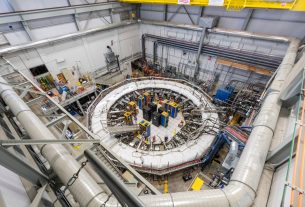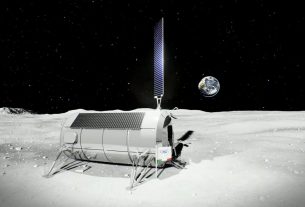“We provide our customers the guidance and insight needed to ensure their research is rigorous, well-designed, and impactful to the broader scientific community–this helps move the needle forward on microgravity research,” she wrote.
Sirisha Bandla, the head of Virgin Galactic’s research operations, says analysis for their projects is also still in progress. “We have flown payloads on every single one of our flights,” says Bandla, who ran some experiments on the flight in July 2021 with Richard Branson, the company’s founder. The company gives researchers some flexibility in the kinds of experiments that can be carried on board, Bandla says, and they can tweak those projects for future flights if the first attempt doesn’t work as planned.
Virgin Galactic and Blue Origin have benefited from NASA’s Flight Opportunities program, which supports academic researchers developing technologies to test at near zero-G with commercial flight providers. That program provided funding for many of the payloads they’ve flown so far.
(SpaceX did not respond to WIRED’s inquiries, and a representative from Blue Origin declined to comment.)
While there’s some agency funding attached to these projects, “a lot of the money for these flights is coming through their tickets rather than science contracts,” says Ariel Ekblaw, founder and director of the MIT Space Exploration Initiative. But, she points out, they’re a chance to move projects forward relatively quickly. For instance, her team’s automated Tesserae experiment flew aboard Ax-1, testing how robotic tiles can join together on their own to create a structure—a precursor to self-assembling construction in space.
Still, private spaceflights have gotten far more attention for their celebrity customers than their scientific payloads. Jordan Bimm, a University of Chicago space historian, worries that science is being sold as a token add-on in an experience that mainly sells prestige and spectacular panoramic views. “It gives a scientific aura to the mission and to the participants when they go back to Earth,” satisfying cultural expectations associating space with science, he says.
Donoviel expects that science will become a higher priority for these companies once they’ve proven the economic viability and technological capacities of the private space industry. “Honestly, with a lot of these companies, the last thing on their minds is research. But they will come around, and at some point it will become important to them,” she says.
And while few people can afford the six-figure costs of seats on suborbital jaunts today, the price tags could drop over the next decade, potentially enabling researchers to fly with the crew and conduct their own experiments—something that has never really been done before. Next spring, says Bandla, Virgin Galactic will do just that. The Italian Air Force will send a researcher to test how changes in gravity affect a person’s heart and cognitive abilities. (Launching a researcher who will run their own experiments on board costs $600,000, she says.) Ekblaw, for one, anticipates eventually sending her graduate students to space, once the prices have fallen more.
Donoviel, Mason, and their colleagues have already begun working on some of next year’s private missions to continue collecting health and genomic data in space. Ax-2 will launch an investor and race car driver and two Saudi Arabian passengers to the ISS in the spring. And Isaacman, a pilot, and two SpaceX engineers plan to fly on SpaceX’s Polaris Dawn in March. That mission will include 38 experiments, including ones focused on how weightlessness affects vision and how the body processes pharmaceuticals in orbit, wrote Sarah Grover, a spokesperson for the Polaris Program who’s unaffiliated with SpaceX, in an email to WIRED. “The goal is to encourage ongoing, open, and extensive research that will contribute to improving life here on Earth and future long-duration human spaceflight,” she wrote.
The four companies currently flying commercial space trips offer unique research possibilities for scientists—and varying levels of transparency when it comes to sharing that data. But this variation is perhaps similar to that in the private aviation industry, Mason says. “SpaceX is different from Axiom, which is different from Blue Origin. It’s just like different airlines, which get you from one place to another, but they do it with different perks, different snacks, and different styles.”



